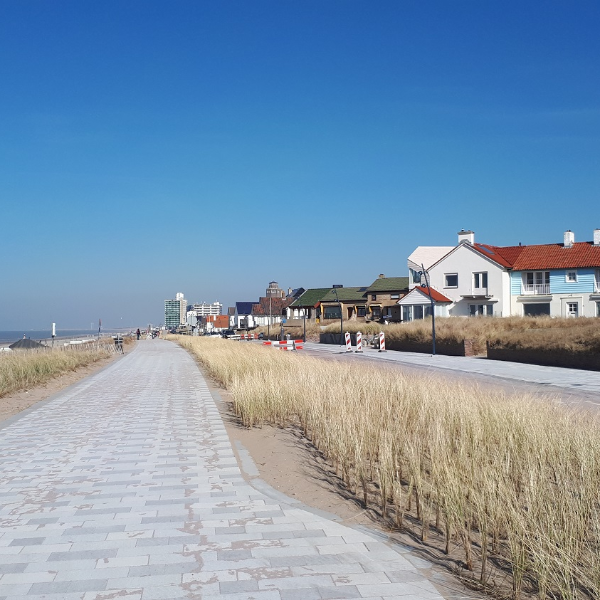Zandvoort Boulevard: subtle adjustments, marked difference

Zandvoort Boulevard: subtle adjustments, marked difference
The boulevard is one of Zandvoort’s distinctive qualities. The Municipality of Zandvoort has used the necessary renovations of the sewer system as an opportunity to modernise the boulevard. Due to this combined quality initiative, residents, tourists and business operators will be able to enjoy a beautiful and practical boulevard in the near future.
The renovation will be carried out in phases. This is necessary, because no work may be performed during the busy summer season. Work has been started on replacing the sewer system. The renovation of the Paulus Loot Boulevard was completed this year.
Multifunctional Design
The Multifunctional Design principle stimulates the search for multiple functions and a maximum combination of functions that can best be served by the design.
The new design was created by providing due consideration to the interests of all user groups. As such a multifunctional aspect was incorporated into the design as a result of which all stakeholders experience added value in comparison to the existing design. In the existing setup, parking spaces were situated on both sides of the road. The consequence of this choice was that the Boulevard clearly was the domain of the automobile. A less prominent place was allocated to cyclists and pedestrians. In the new area design, cars are parked adjacent to the houses. This creates more room for cyclists and pedestrians on the dune side. This allows multiple traffic flows to smoothly coexist. Pedestrians now walk adjacent to the dunes. This contributes to the feeling of a pedestrian boulevard, because nature now is closer by.
Nature-based Design
The Nature-based Design principle requires the engineer to map out natural processes: physical, chemical and/or biological. During the design it is important to avoid these processes from having any negative effects, and instead use them to create additional benefits.
The dunes probably are one of the most loved places for walking in the Netherlands. The old boulevard did not pay a lot of attention to this attractive feature. The available benches were located in the middle of the sidewalk. As a result, pedestrians (or resting cyclists) continued to be fully part of the traffic. Through a simple intervention, it has become possible to more fully enjoy the dunescape and the sea view in a more tranquil setting. The benches have been relocated and now sit further into the dunes. This way the hustle and bustle now is located behind the pedestrian or cyclist. By adding dunes between the walking zone and the road and removing hardened surfaces, the new design also provides more room for nature.
Participatory Design
Participatory Design means not designing for the local community but with the local community. This increases support for the project, thereby making its implementation more efficient and the design more in line with the wishes of those who live and work nearby.
There was extensive participation by residents and stakeholders in the process leading up to the final design for the renovation of the Zandvoort Boulevard. This same thing was true throughout the various phases, such as the design sketch and the preliminary design. Communication and the relationship with various beach bar owners in particular was essential during the process. During construction, the contractor’s engagement and stakeholder manager was responsible for communication.
More information?
